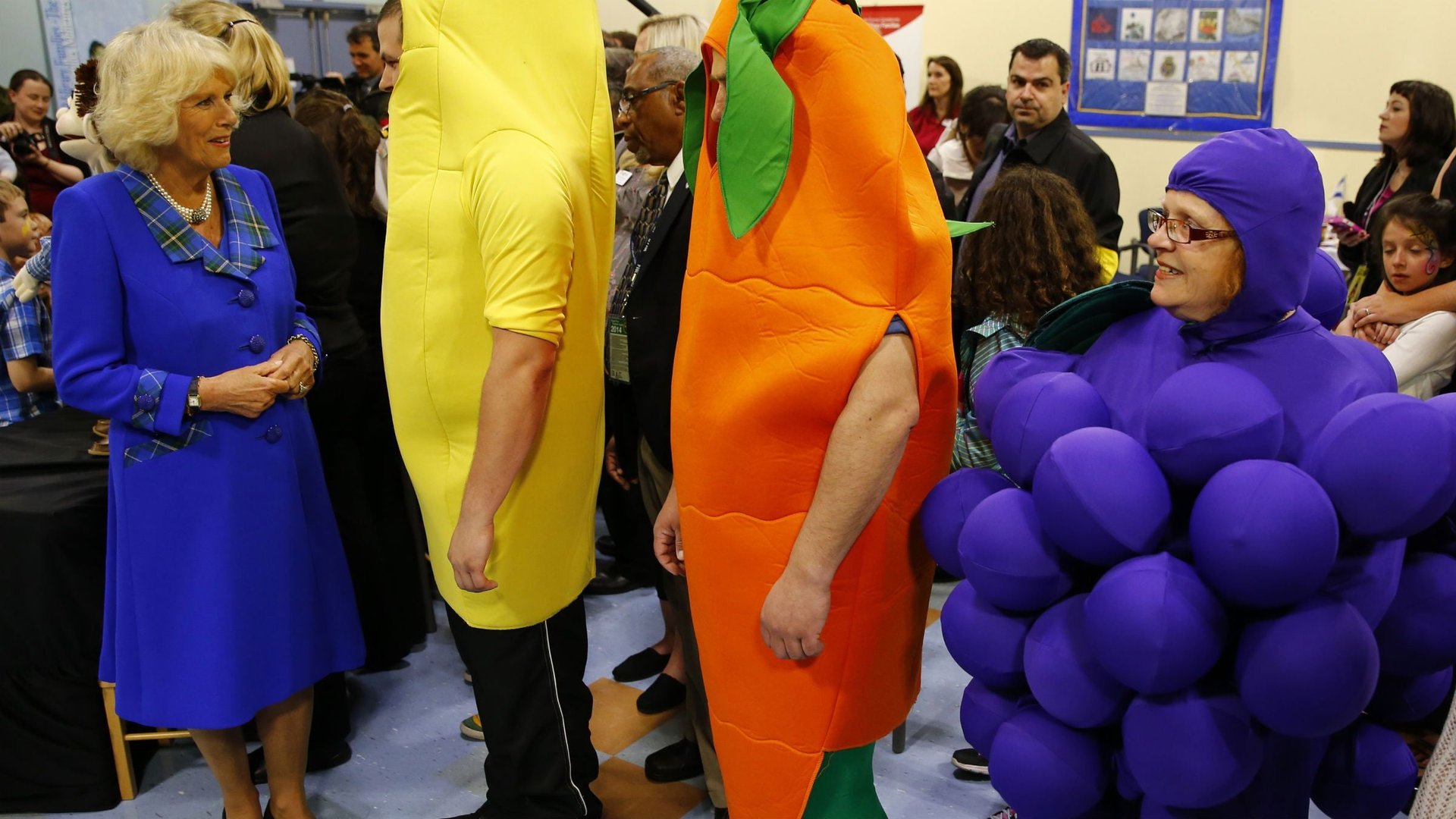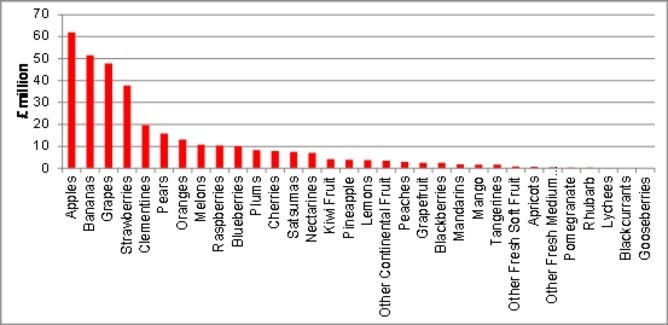No supermarket will ever sell all the varieties of our favorite fruits
The bubble berries trialling in Waitrose supermarkets may taste of bubble gum, but they are not some clever 21st century genetic modification. These beautifully fragrant fruits, which are a variety of small strawberry, were in fact popular in the 19th century. Then they fell out of favor and had been all but forgotten by modern consumers.


The bubble berries trialling in Waitrose supermarkets may taste of bubble gum, but they are not some clever 21st century genetic modification. These beautifully fragrant fruits, which are a variety of small strawberry, were in fact popular in the 19th century. Then they fell out of favor and had been all but forgotten by modern consumers.
Whether their return is for a few weeks or for the long term, they are a reminder of the wide sub-species of popular fruits that exist around the world but rarely appear in supermarkets. We are used to seeing the same 2 or 3 versions of our most familiar fruits and give little thought to their thousands of cousins. We’ll talk about why this happens in a moment, but first a little bit of information on the best-known fruits on the market.
The top 5 are apples, bananas, grapes, strawberries and clementines. Between them they make up 64% of the Scottish market (the UK market follows much the same pattern).

Apples
There are more than 7,500 varieties of apple, but only very few are ever available. Varieties such as Braeburn, Gala, Golden Delicious and Granny Smith dominate the volume sales market, while Bramley is the cooking apple of choice. These come in ahead of other supermarket regulars like Pink Ladies, Jazz and Cox, which represents about 50% of apples harvested in the UK.
Bananas
Bananas may not bring in the most money, but they are the most popular fruit in the UK by consumption per capita. They surpassed apples a few years ago (see graphic) thanks to clever advertising and excellent prices, not to mention a large number of plus points: they are easy to open, high in fiber, vitamins and energy, low in calories and a first-class hangover cure!

There are more than 400 banana varieties grown in the world. The Cavendish variety has dominated since the 1950s when it replaced the Gros Michel, which was susceptible to fusarium wilt and hence less suitable for cultivation in large commercial plantations. In 2010 the Cavendish accounted for 40% of global banana production.
Grapes
The UK ranks about 11th-largest consumer of grapes in the EU behind Italy, France and Spain. Their popularity is also waning, having peaked in 2005.
The number of grape varieties is immense, including both table grapes and wine grapes. But only a limited number are retailed in supermarkets, including Sultana (Thompson seedless), Flame, Muscat, Almeria and Concord grape.
Strawberries
Strawberries were a waning product that made a comeback. This was on the back of a big push in Dutch strawberries, which were developed in the 1980s and 1990s and replaced home-grown varieties such as Cambridge Vigour, Hapil and Honeoye.
There has also been an increase in strawberry production in the UK, including Scotland, where the main varieties grown are Elsanta and Sonata. As many as 90% of them are grown in polytunnels and with the season expanded from 6 weeks to 6 months.
These berries have largely overshadowed lesser known UK varieties such as Cambridge favorite, Christine, Marshmellow, Pegasus, Rhapsody, Rosie, Symphony or Alpine strawberries. But despite the healthy home market, a large number of our strawberries still come from the likes of Spain and Israel.
Clementines
Clementines are a citrus variety which is a hybrid between a mandarin and a sweet orange. This means they don’t come in lots of varieties, unlike the rest of the top five fruits. They are usually grown in north Africa and southern Europe.
To explain why we see so few of the thousands of varieties of these fruits in our supermarkets, clementines excepted, you have to look at the changes in the supply chains and particularly retailing since the 1990s. These changes have been put down to a number of factors.
First, supermarkets react to increasing competition by having costs as low as possible. Fresh produce is one of the few categories that will make shoppers switch stores so the big players regularly broaden their offerings, but they’ll tend to do this in ways that don’t affect costs too much. So commonly they’ll restrict each type of fruit to as few varieties as possible.
The 1990 Food Safety Act requires buyers to take all steps to ensure the safety of the food they received from their suppliers. This was reinforced by the growth of supermarkets’ own-label products, which are very important to the fresh produce category. Both developments brought tighter supply-chain control.
Supermarkets sought more consistent quality in fresh produce and to squeeze costs out of the supply chain. This pressure has helped bring about fewer, larger, technically efficient and innovative suppliers. Note that these suppliers are not necessarily based in the UK but cover all parts of the world.
In short, the fruit supply chains were increasingly co-ordinated from producers to retailers to achieve specific standards that reflect the needs of each segment in the chain. This wouldn’t be compatible with selling many varieties of the same fruit because different varieties have different yields, pest resistance, flavor, maintenance of quality under cold storage, resistance to transportation, and so forth. There are also the economies of scale to think about: you save money by expanding your level of production of a single variety.
Then there is the consumer side of the equation. Cosmetic concerns demand a large enough crop that would allow a farmer or packer to select fruits with the minimum number of imperfections. Consumer simplicity is obviously a key reason for the fruits in the top 5. They are all easy to eat, portable, and don’t have stones or lots of seeds. For all these reasons, our best-known fruits have tended to concentrate on just a few convenient varieties in recent years, where taste may not always be the top priority.
The Elsanta strawberry is an excellent example of this supply chain engineering. It is considered the supermarket dream fruit, with a bright appearance, long shelf-life and glossy firm skin. It can be transported long distances without bruising. Its huge berry makes it quick and cheap to pick. When this is available, why would you want to cultivate any alternatives?
So welcome to the modern supermarket fresh produce section. You’ll see a diverse assortment of fruit. From time to time interesting varieties such as bubble berries will come to the fore. But you won’t see many varieties of the same fruit. They just don’t fit the tried-and-tested model.
This post originally appeared at The Conversation. Follow @ConversationUK on Twitter.